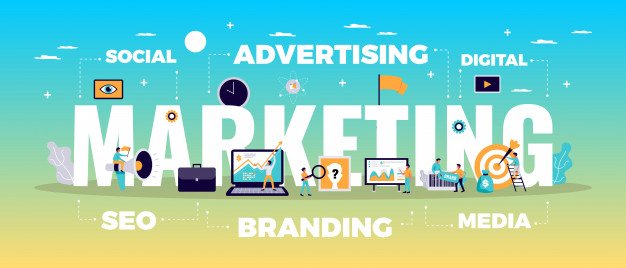Imagine this scenario. You’ve launched a business. Your products or services are top-notch. Yet, customers don’t seem to know you exist. This situation isn’t uncommon.
Today’s market brims with choices. Brands compete fiercely, making it tough to grab the limelight. And with the digital age, there’s an information deluge. Every day, consumers face a barrage of brand messages. Cutting through this noise feels daunting.
However, there’s hope. This article unveils strategies to skyrocket your brand’s visibility. Soon, instead of being a face in the crowd, you’ll become the talk of the town. With commitment and clarity, you can transition from obscurity to prominence.
Understanding Your Brand’s Core Values
Diving into brand building starts at the roots. First up, it’s vital to grasp your brand’s essence. What do you represent? This involves defining your mission, vision, and values. These elements provide direction. They serve as a compass, guiding every business decision.
Next, focus on standing out. In a sea of brands, uniqueness is gold. Here’s where your unique selling proposition (USP) steps in. It’s not just about what you offer. It’s about why consumers should pick you over competitors. Think about what sets you apart. It could be superior quality, exceptional service, or an innovative feature.
Lastly, weave a compelling brand story. People remember stories, not dry facts. Narratives evoke emotions. They create connections. Your story shouldn’t be a sales pitch. It should be a genuine reflection of your journey and values. It’s about resonating with consumers on a human level. Sharing challenges, triumphs, and aspirations makes your brand more relatable.
In essence, knowing your brand inside-out is the foundation. With a clear understanding, you position yourself for success in the brand-building journey.
Leveraging Digital Platforms
In today’s digital age, online platforms are game-changers. They can propel your brand’s recognition rapidly. Many businesses even turn to specialists like a marketing agency Bristol to help navigate the complex digital landscape. With expert guidance, you can maximize your online presence and ensure you’re reaching your target audience effectively. Let’s delve into how.
Start with social media. It’s more than just posting photos or updates. It’s about strategic engagement. Picking the right platforms is crucial. Not every channel suits every brand. Identify where your audience spends time. Then, maintain a consistent brand voice. Consistency reinforces recognition. Over time, your audience will identify with your messaging.
Content marketing isn’t about churning out articles. It’s about delivering value. Craft content that addresses your audience’s needs. Make it relevant. Make it resonate. Consistency is key here too. Regularly updated content keeps your audience coming back for more.
Lastly, there’s SEO, or search engine optimization. It might sound technical, but its impact is profound. Proper SEO ensures your brand appears when potential customers search online. It’s not about stuffing keywords. It’s about crafting quality content that search engines deem worthy. The result is higher rankings and more visibility.
In a nutshell, digital platforms offer vast potential. By harnessing them effectively, your brand can soar to new heights in awareness.
Engaging With Your Community
Building brand awareness isn’t a solo endeavor. It’s a collective effort. Engaging with your community amplifies your reach. Here’s how to foster that connection.
First, consider hosting brand-centric events. These could be webinars, workshops, or local meetups. Events provide face-to-face interactions. They help humanize your brand. Attendees gain firsthand experience. They see your passion, knowledge, and commitment. Such events also create buzz. When attendees share their experiences, word spreads.
Next up, partnerships. Collaborate with influencers in your domain. They’ve already done the legwork. They have a dedicated audience that trusts them. By aligning with them, you tap into their follower base. You also borrow some of their credibility. Remember, authenticity is crucial. Choose influencers who genuinely resonate with your brand’s values.
Lastly, who doesn’t love a good deal? Promotions and giveaways can work wonders. They not only boost short-term sales but also foster long-term loyalty. People love feeling valued. Offering exclusive deals makes them feel special. Plus, they’re likely to spread the word.
Community engagement provides the fuel for your brand’s growth engine. By genuinely connecting, you lay the foundation for sustainable brand awareness.
Monitoring And Adjusting Your Strategy
In the brand-building journey, staying static isn’t an option. The market shifts. Consumer preferences evolve. You must keep pace. So, how can you ensure your strategy stays fresh and effective?
First, turn to analytics. Modern digital tools offer deep insights. They track metrics like brand engagement and reach. By monitoring these, you can assess your strategy’s impact. It gives you a clear picture. You see what’s working and what’s not. With real-time data, you can make informed decisions.
Then, listen to your audience. Feedback is invaluable. Encourage customers to share their thoughts. Positive or negative, every piece of feedback is a learning opportunity. It sheds light on areas of improvement. With these insights, you can refine the brand experience. It ensures you always align with customer needs and desires.
Lastly, flexibility is paramount. The market landscape is dynamic. Being rigid can leave you behind. Adaptability, on the other hand, keeps you ahead. Regularly review your strategies. As market dynamics change, tweak your approach. By staying nimble, you can navigate challenges and capitalize on opportunities.
To wrap up, a successful brand awareness strategy isn’t set in stone. It’s a living entity, needing regular evaluation and adjustment.
Conclusion
Building brand awareness is a transformative process. It moves a brand from the shadows into the limelight. The path from obscurity to prominence demands three things: a solid strategy, unwavering effort, and adaptability.
Engaging with customers isn’t just beneficial; it’s crucial. Genuine interactions build trust. They shape perceptions and solidify brand loyalty. So, never underestimate this power.
Additionally, the branding world never sleeps. New trends emerge. Technologies evolve. By keeping a finger on the pulse, you ensure relevance. Stay updated. Embrace the new, while staying true to your core values.
Lastly, invest in growth. Not just business growth, but personal and team growth. Continuous learning paves the way for sustainability. It fuels innovation, insights, and improvement.
By embracing this methodical approach, any business can rise. You can transition from being a whisper in a crowded room to the main conversation. Remember, brand awareness isn’t a mere checkpoint. It’s the opening act in the customer’s journey with you. Ensure it leaves an imprint, setting the stage for a lasting relationship. Make every moment of recognition count.
Read Also :























All Comments
ufabet
I appreciate you sharing this blog post. Thanks Again. Cool.